It was a sunny and sweltering day in October when I first set foot in Beaumettes, a hidden gem on the busy road from Cavaillon to Apt.
It wasn't just a mere detour; it became a revelation, an intimate encounter with a village that whispered stories of the past amidst the gentle rustle of its leafy surroundings.
Since 1994, Beaumettes has been bypassed by a new stretch of the D900 road from Cavaillon to Apt, leading many tourists to overlook this quaint village in their travels.
Always on the lookout for the unusual and intriguing, often venturing off the beaten path, I stumbled upon this jewel known as Beaumettes.
My affinity for discovering places that are beautiful, rich in stories, and hidden away from the usual tourist trails led me to this peaceful enclave.
The day was hot, typical of a late October in Provence, where summer lingers in the golden hues of the landscape and the languid afternoons.
But the heat did nothing to diminish the beauty of Beaumettes; if anything, it added vividness to the village’s colours, a deeper silence to its secluded corners.
Join me as I recount my journey to Beaumettes, a place that captured my heart with its understated elegance and the profound sense of peace it offered.
Watch this short video on the Luberon!
Plan your trip
- 🛏 Find the best accommodations in the Luberon on Booking.com
- 🚙 Rent a car in Aix-en-Provence or Marseille-Provence Airport
- 🙋♀️ Get the PASS CÔTE D'AZUR and take your pick from more than 100 amazing experiences!
- 🤩 Visit the beautiful Provençal region of Luberon
- 🚐 Join a 6-hour tour of Lourmarin, Bonnieux, Roussillon, and Gordes by air-conditioned minibus
- 🚘 Discover Provence in a 2CV. Stroll along exceptional roads and enjoy a piece of Luberon all to yourself!
- 🥗 Experience a black truffle hunting tour in a Luberon plantation
- 📚 Read the DK Eyewitness Provence and the Côte d’Azur Travel Guide
- 🚗 Park on the Place de la Mairie or on the other side of the D900 (route de Ménerbes), near the cycle path (subway to the village).
Beaumettes: A Bit of History
Nestled between Cavaillon and Apt on the south flank of a rocky hill, Beaumettes harbours a rich tapestry of history that dates back to the Neolithic age, a testament to the village's ancient beginnings.
Roman occupation is evidenced by the remnants of the Font-de-Loup villa, a relic that whispers tales of a bygone era where the Romans once tread.
By the 11th century, the land fell under the sway of the County of Forcalquier, first documented in 1055 by the name of Balma - an ancient word signifying 'cave'. It was a domain held by the prestigious Abbey of Saint-Victor in Marseille, marking the village not just by its natural beauty but also by its spiritual significance.
The 14th century saw the lands ravaged by marauding bands of Routiers, casting a shadow of turmoil over the tranquil landscape. The fief then passed to the Baron of Sault, a vassal of the powerful Baux family, intertwining Beaumettes in the intricate web of medieval feudal politics.
A striking twist in the village's narrative came in 1471 when it found itself deserted, a ghost of its once vibrant self.
Yet, the Renaissance breathed new life into its streets as the 16th century heralded the rise of Beaumettes as a seigneurie under the auspices of the Autric de Vintimille family, weaving a rich historical tapestry that adds to the enchanting allure of this Provençal jewel.
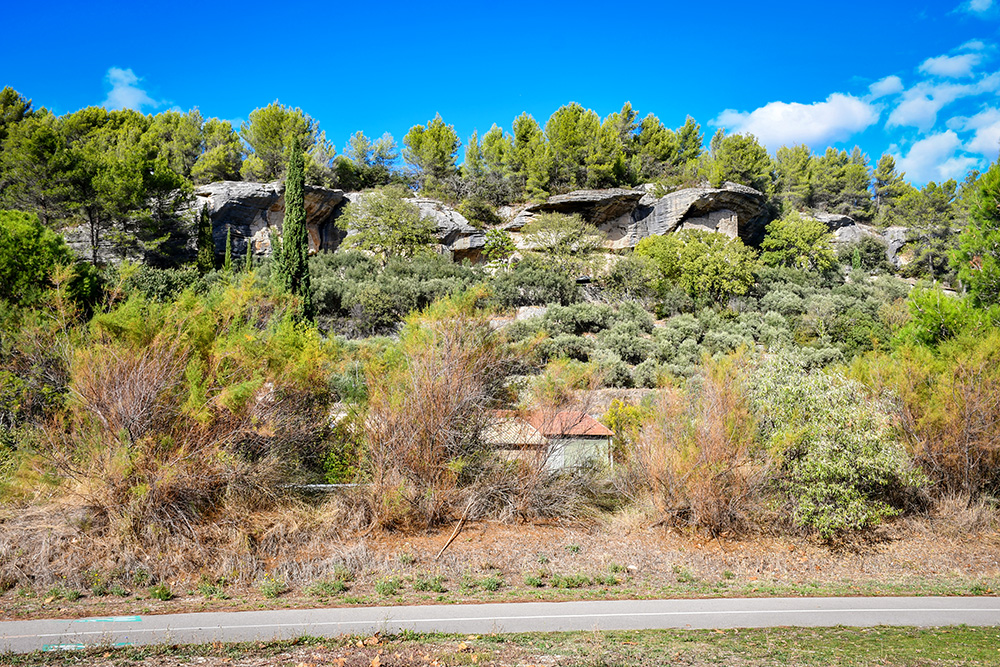
The hill of Beaumettes and the troglodyte houses © French Moments
Where does the name Beaumettes come from?
The etymology of "Beaumettes" traces back to the Latin word "balma", which denotes a cave or a natural grotto, a fitting descriptor for a region sculpted by the hands of nature into a labyrinth of rocky shelters and serene hideaways.
Over centuries, this intimate bond between the land and its inhabitants has been immortalised in the village's name.
Not Baumettes in Marseille !
The village should not be confused with another site in Provence that bears the name Baumettes (and is far more famous than our village in the Luberon): the Baumettes prison in Marseille, one of the largest in France.
The name of the infamous prison comes from the Baumettes district, where there used to be small caves.
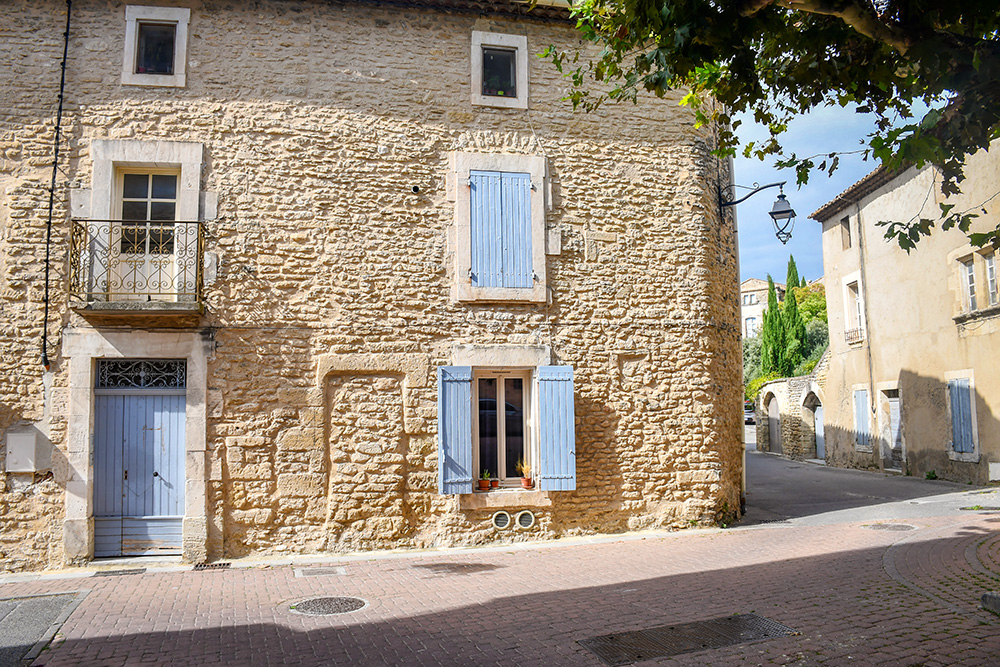
Grand Rue © French Moments
The Discovery Guide of Beaumettes
Here's some tourist information to help you explore the Provencal village.
🎦 Check out my guided walk on YouTube to explore Beaumettes with me:
Understanding the Village
The centre of the village of Beaumettes is tiny. You will spend at most 5 minutes discovering it.
The village's only street, Rue des Mirocouliers crosses the centre marked by the Place de la Mairie (town hall square).
However, the local curiosity to see there are the troglodyte houses under the cliff.
The Village of Beaumettes
The Rue des Mirocouliers (High Street) is the backbone of the village.
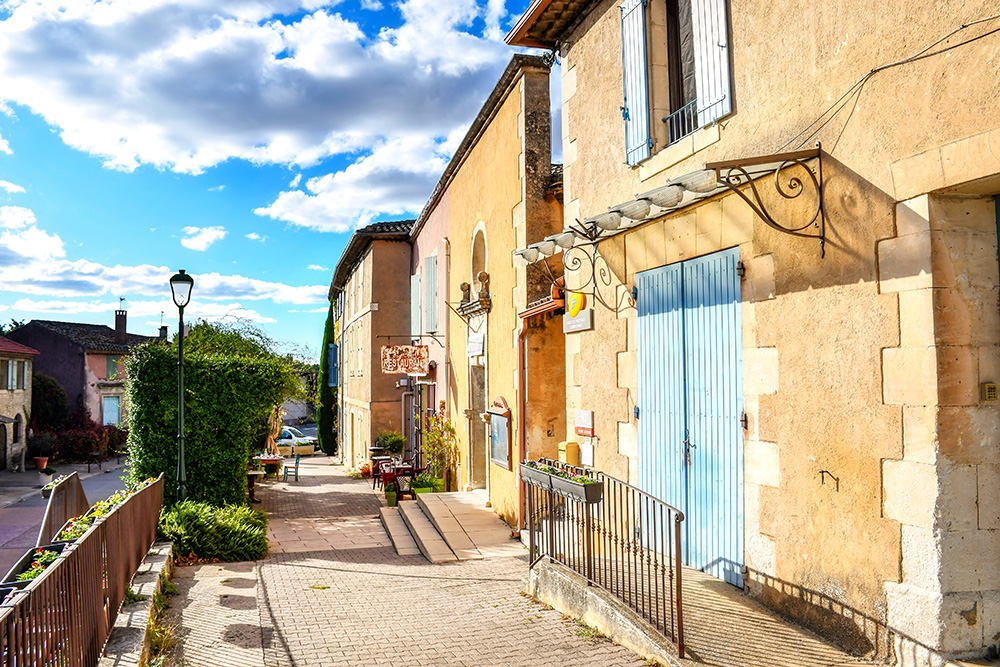
Montée du Château - Rue des Mirocouliers © French Moments
Most of the village houses date back to the 19th century and have been painted in pastel shades reminiscent of Italy.
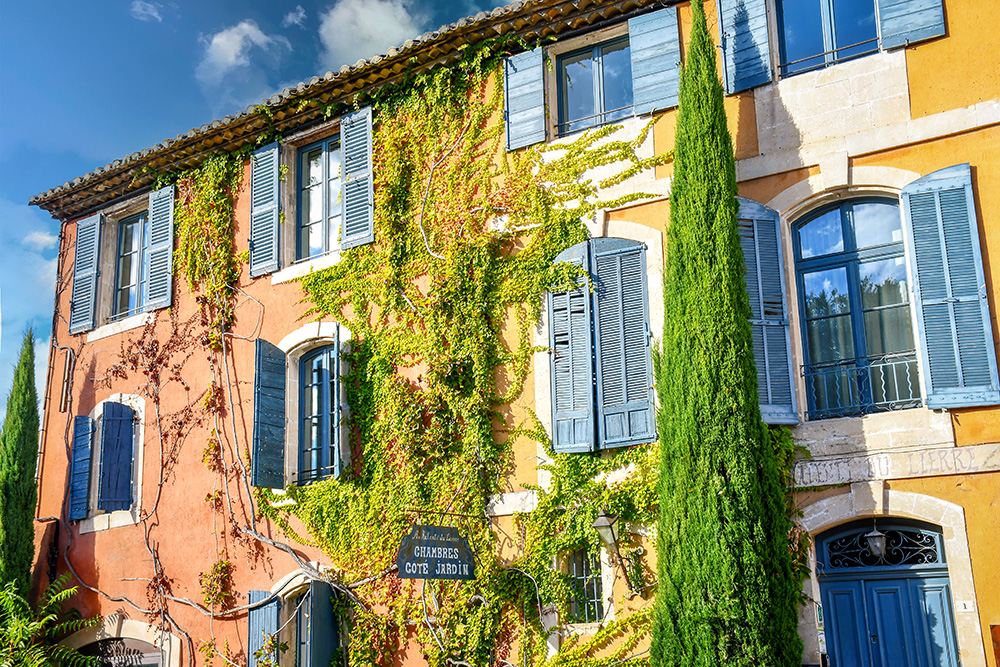
Italy or Provence? © French Moments
Place de la Mairie
The Place de la Mairie is located at the centre of the village and is lined with the former chapel, restaurants, cafés, and guest houses.
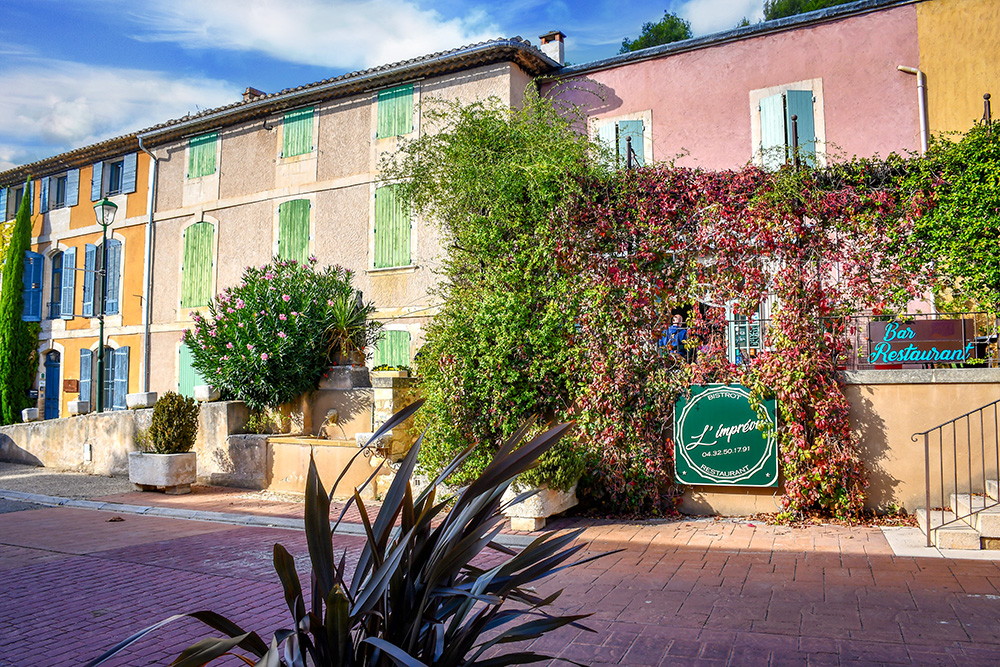
Place de la Mairie © French Moments
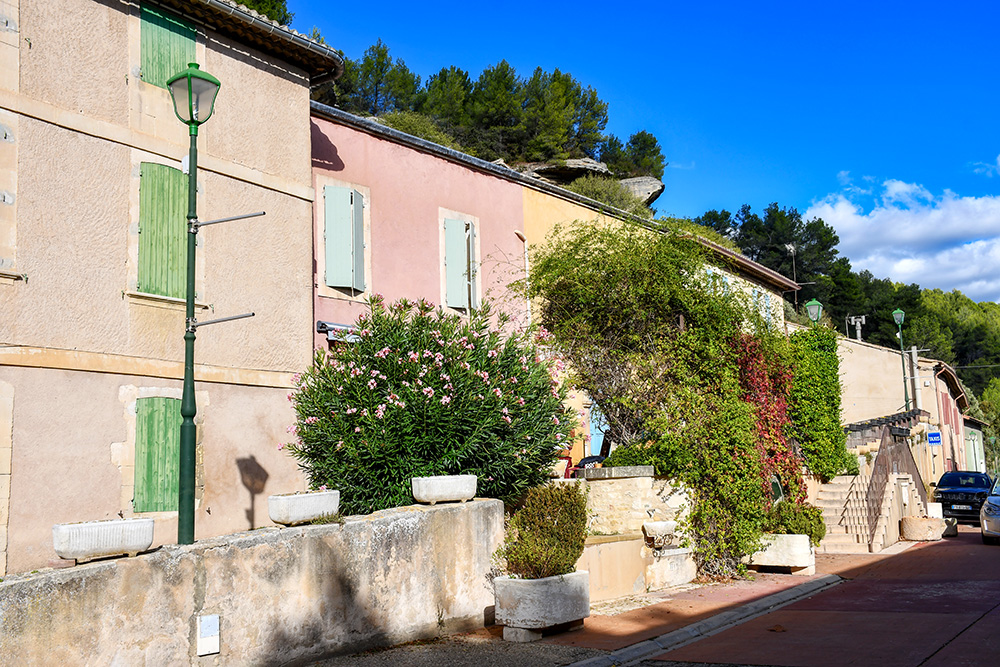
On Place de la Mairie © French Moments
The exhibition hall is a historic monument. It is an old chapel from 1635, given to the villagers by Baron Autric De Vintimille and famous for its oculus (œil-de-bœuf).
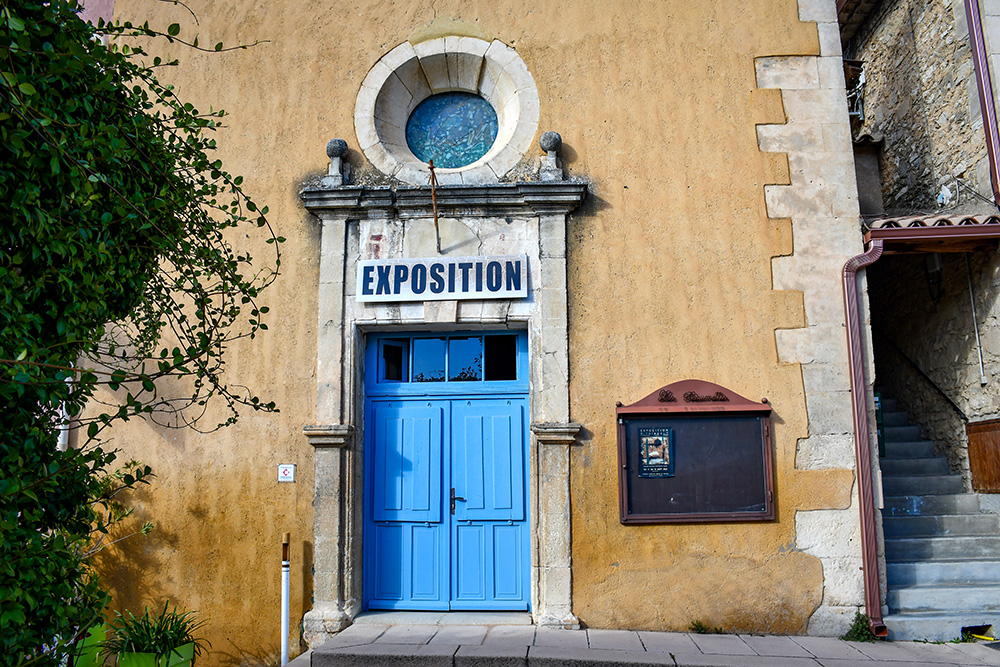
The old chapel © French Moments
Towards the Château
From the Place de la Mairie, follow the signpost to Petit Chemin du Château. The stone path climbs the hillside towards the troglodyte village.

Towards the château © French Moments
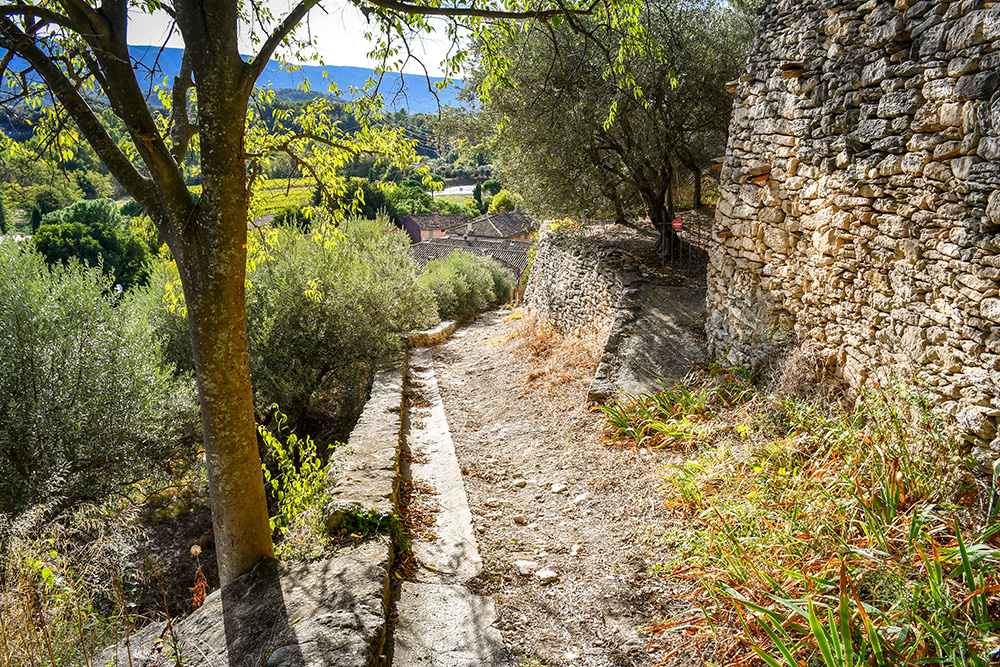
The path towards the château © French Moments
The Troglodyte Village
We arrive at the most curious site in Beaumettes: the troglodyte village.
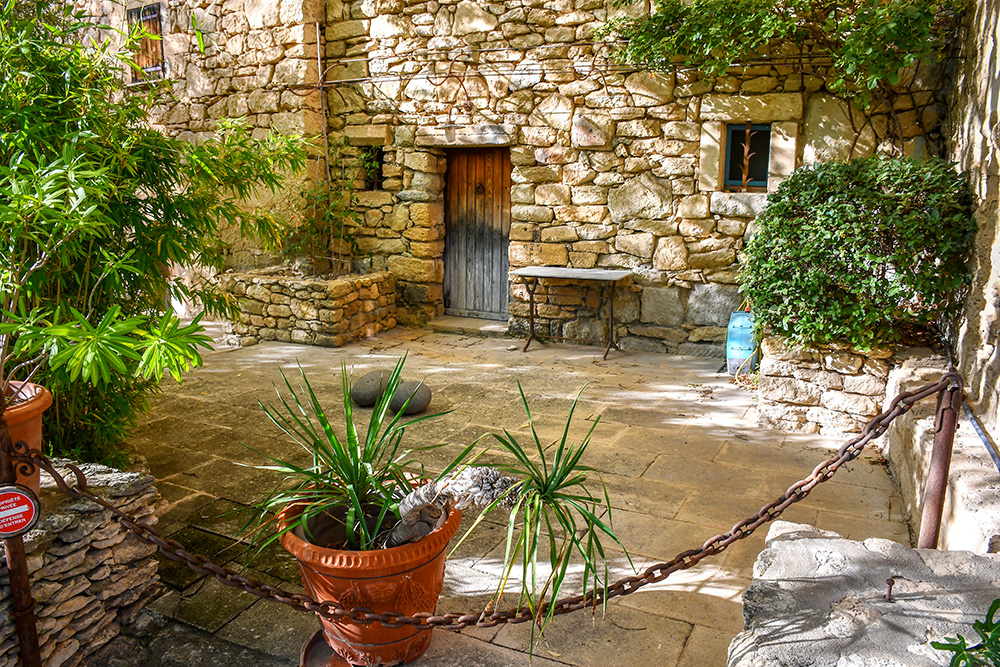
The Troglodyte village © French Moments
The caves have been used as shelters or dwellings since at least the Ancient Times.
Even if they were somewhat forgotten at various times, they were never abandoned.
Moreover, they are still inhabited today, as you can see.
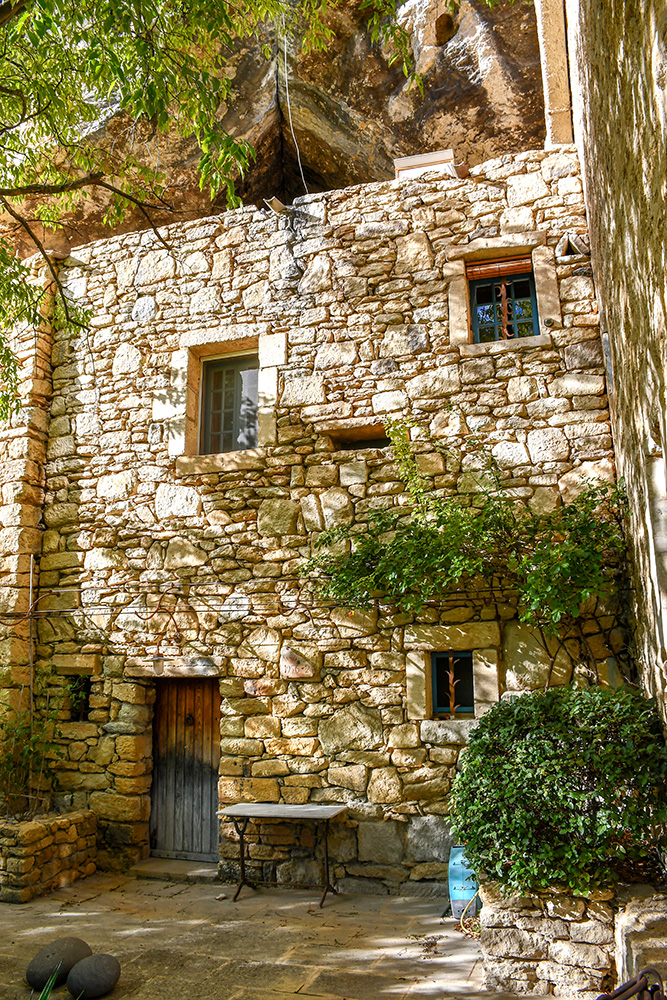
A Troglodyte house © French Moments
The Renaissance chateau, with its mullioned windows and arched porch, is so embedded under the huge rocky overhang that, to allow smoke to escape, a chimney flue had to be installed, ascending at a 45-degree angle under the cliff.

The Troglodyte château © French Moments
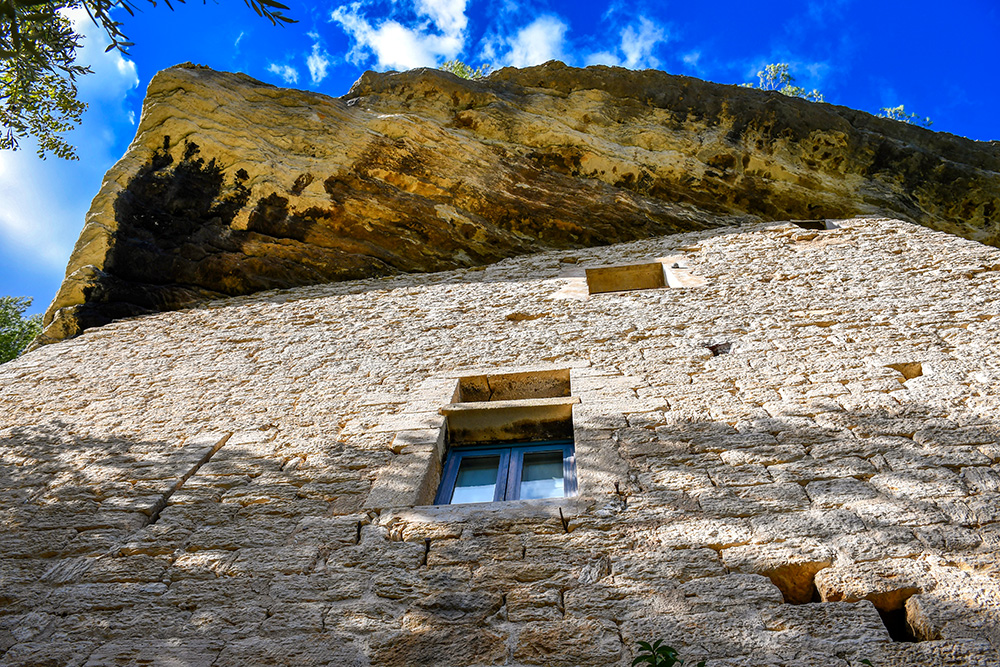
Looking upwards © French Moments
Chemin de la Cabrerie
Past the troglodyte village, the section of the trail is nicknamed the “Sentier sous les voûtes”, the path under the vaults.

The "Sentier sous les voûtes" © French Moments
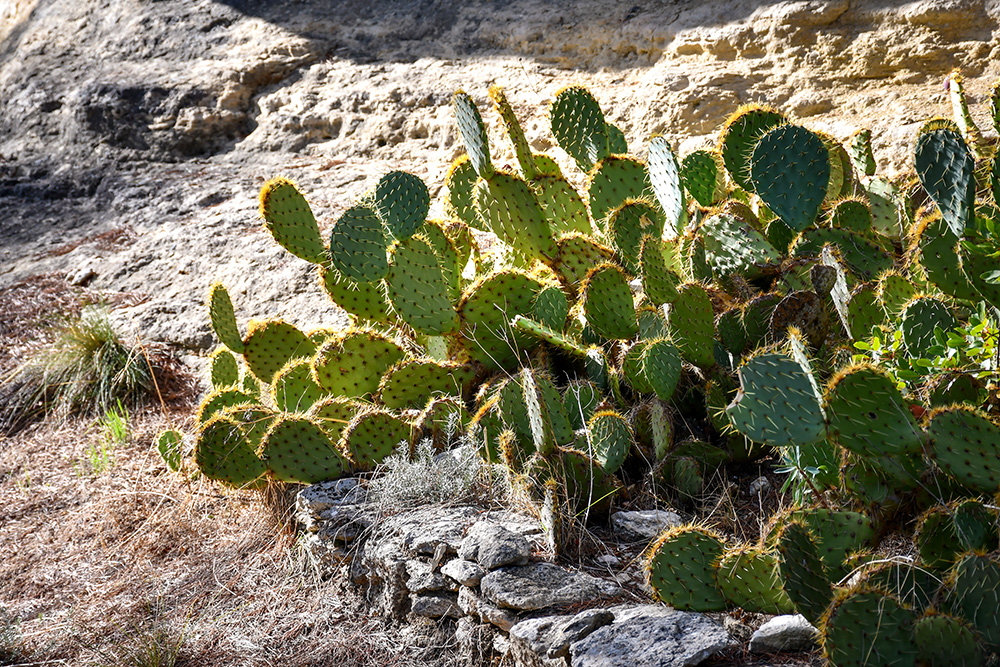
Cacti on the path © French Moments
It offers some spectacular views of the Coulon (or Calavon) Valley, the vineyard, and the mountain barrier of the Petit Luberon:

The view from the path © French Moments
The Roche Pointue
Further up, the Chemin de la Cabrerie (ie. the path that led to the goats’ enclosure) is lined with an orchard enclosed by a dry stone wall typical of the region.
All the vegetation here is quintessentially Provençal. If we were walking in a forest in the north of France, it would look entirely different.

Chemin de la Cabrerie © French Moments
The path leads to a place known as "La Roche Pointue", at an altitude of 182 metres.
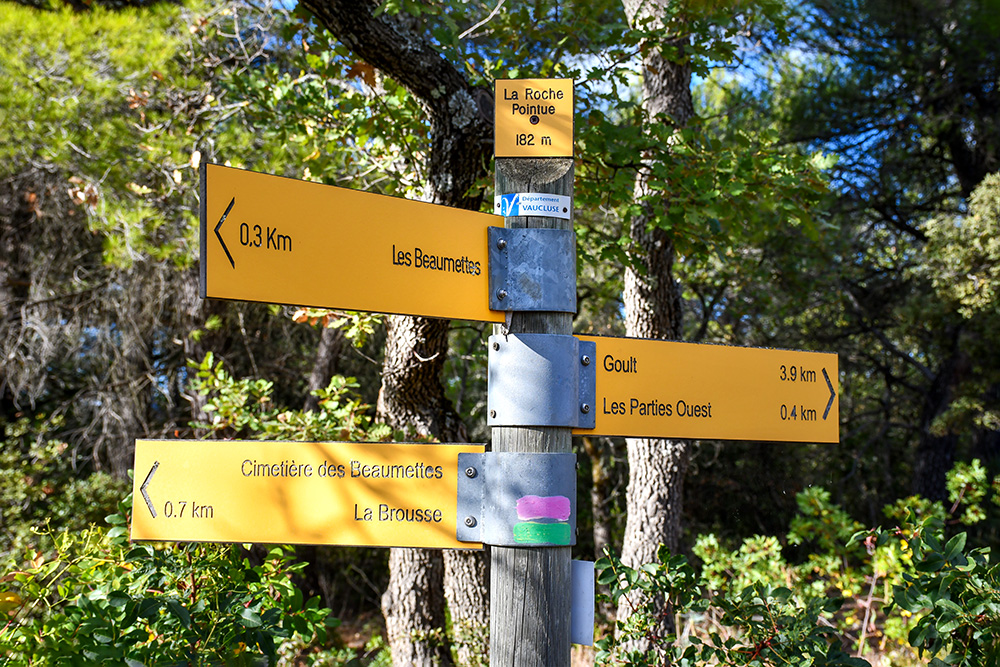
Roche Pointue © French Moments

Around Roche Pointue © French Moments
Find out more
Here are some pages from our blog and other websites to find out more about this Provencal destination.
- Discover the hilltop villages of the Luberon
- Explore the neighbouring villages of Gordes and Cabrières-d'Avignon
- Find out more about Provence-Alpes-Côte d'Azur
- The official tourist office of the area
Where to stay near Beaumettes
Beaumettes and surroundings have a high capacity for holiday accommodation. The commune and its surroundings has hotels, bed and breakfasts (covering all price ranges), estate agencies offering seasonal rentals and gîtes.
Click here to book your accommodation in the Luberon or browse the map below:
What to do in the Luberon
Be inspired by a list of things to do in the Luberon:
Pin Beaumettes on Pinterest





